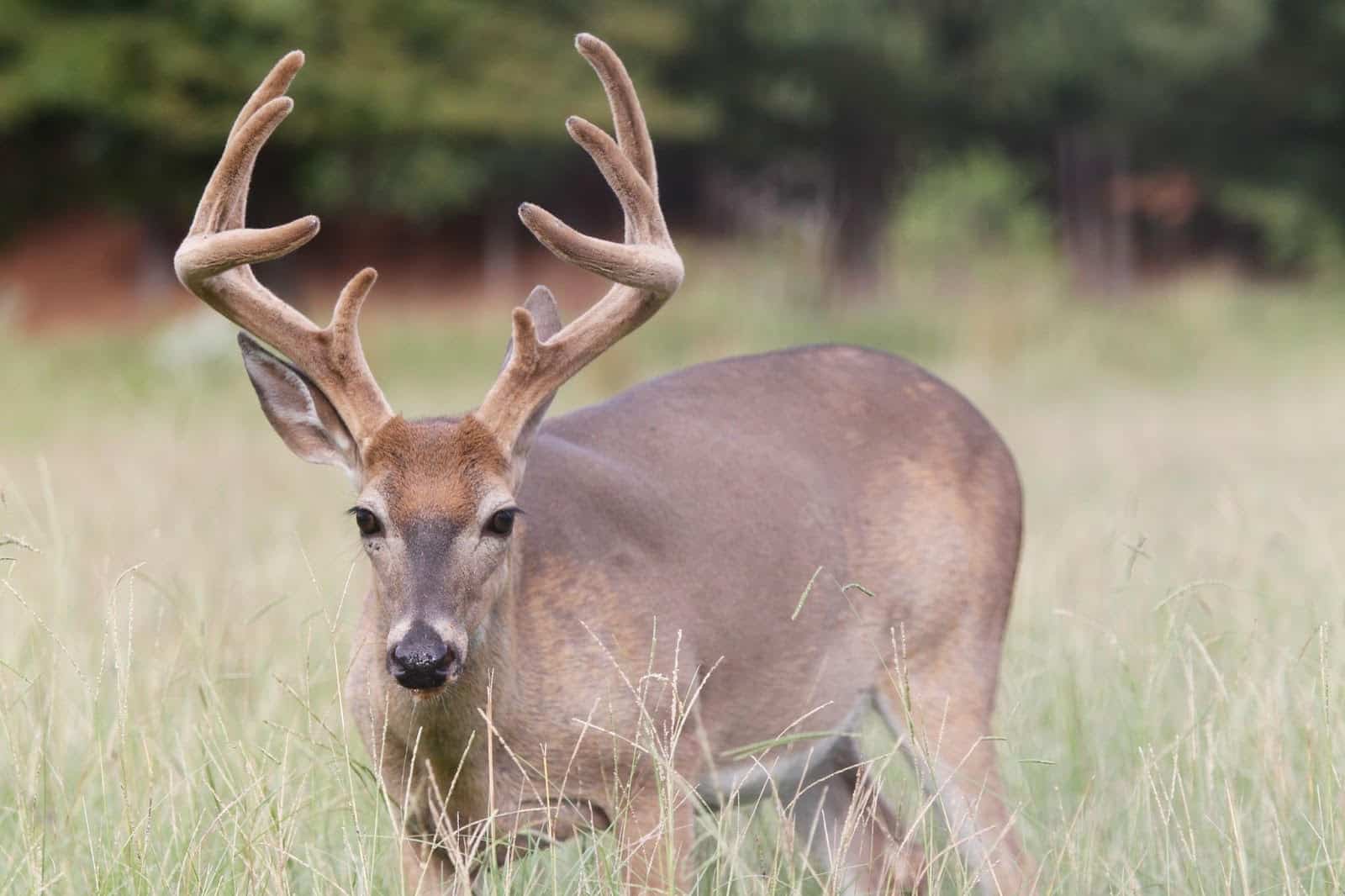Free CWD tests for hunter-harvested deer may land lifetime hunting and fishing license
ON 10-04-2023
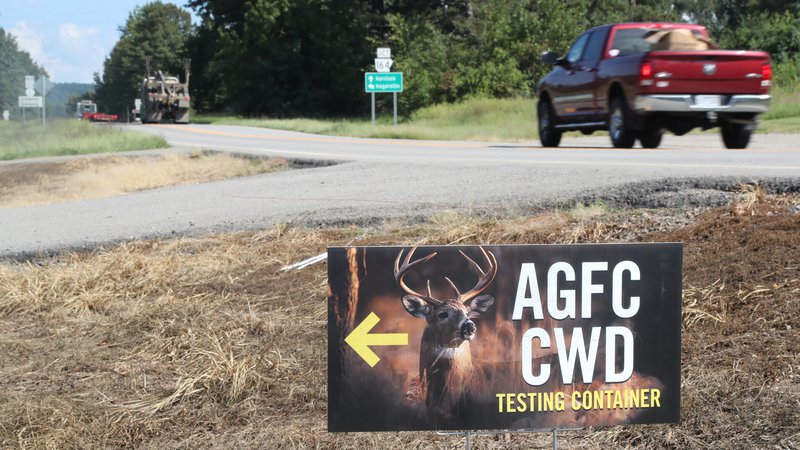
Oct. 4, 2023
Randy Zellers
Assistant Chief of Communications
LITTLE ROCK — With cooler weather on the horizon and archery deer season underway, the Arkansas Game and Fish Commission wants to remind all hunters to help monitor chronic wasting disease in the state by using one of the AGFC’s free CWD testing locations. All resident hunters who submit a sample for testing also will be entered into a special drawing at the close of the 2023-24 hunting season for one of two Resident Sportsman’s Lifetime Combination Licenses and Permits (valued at $1,000).
The most popular method for hunters to have their deer tested is through the AGFC’s system of drop-off containers throughout the state.
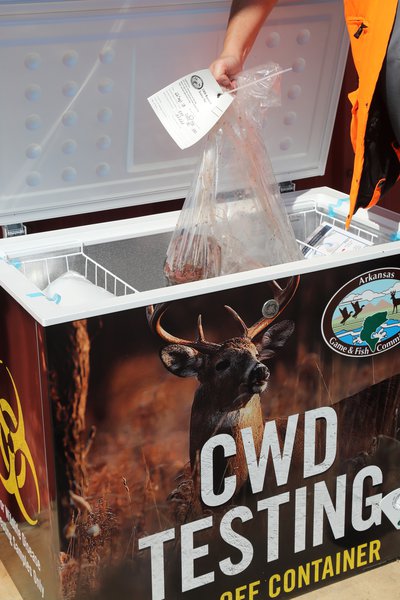
“We have at least one container location in every county, and multiple locations in many counties near the areas where CWD has been found.” AJ Riggs, wildlife health biologist for the AGFC, said.
To use a drop-off container, bring the deer’s head with 4 to 6 inches of the neck attached and any antlers removed, and place it in one of the provided plastic bags with your name and contact information on the card provided. The AGFC will collect these samples and have them analyzed. Testing results should be available within two to three weeks.
Riggs said anyone who submits a positive sample will be notified via phone as soon as the results come back.
“That’s why it’s so important to fill out the information card as clearly as possible and include all the information asked for,” Riggs said. “We want to get in touch with anyone who has a deer that tests positive as soon as possible so that we can make arrangements to dispose of that deer’s carcass properly and follow up with the exact location of harvest to continue tracking the disease in the state. We also can give a replacement tag to harvest another deer to make up for the lost meat.”
The bottom half of the information card that the hunter keeps will provide directions so the hunter can verify results for themselves if they do not receive a phone call.
“The results are posted online and a confidential code will allow you to receive your results for peace of mind,” Riggs said.
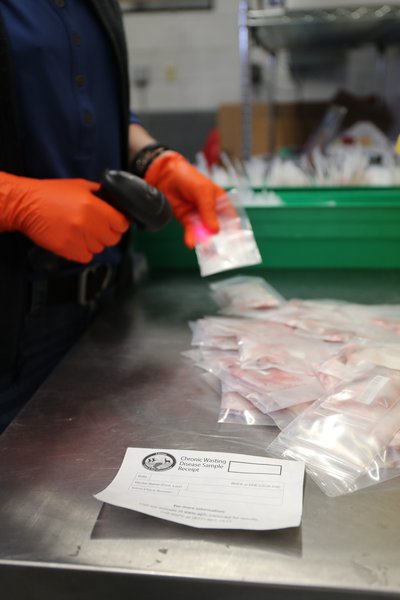
The other free option to get your deer tested for CWD is to take it to one of the AGFC’s network of participating taxidermists, who will pull a sample for you. Most taxidermists should pull a sample from any deer submitted to them, even if you are not using their service to preserve your deer.
“Sample quality is also important for hunters to keep in mind,” Riggs said. “Hunters are concerned, and should be, about ensuring their harvest is properly cared for, but it should also include the head. If you can’t get to a taxidermist or a drop-off container, keep the head cool so the sample does not deteriorate.”
All testing locations are available at www.agfc.com/cwd. Some of the locations have changed from last year, so hunters are encouraged to look ahead of time and find a sample location closest to their hunting area and note hours of operation.
Dr. Jenn Ballard, state wildlife veterinarian for the AGFC, reminds hunters to follow transportation regulations concerning their harvested deer and the CWD Management Zones, even when submitting samples for testing.
“We are trying to slow the spread of CWD throughout the state, and we really need hunters’ help to do that,” Ballard said. “We need you to keep hunting, keep submitting samples and keep the remains of those harvested animals disposed of properly.”
CWD is a fatal neurological disease that affects members of the deer/elk family (cervids). It was first described in 1967 in Colorado and since has spread to 26 states, Canada, South Korea, Finland and Norway. It was discovered in February 2016 near Pruitt and has since been found in 18 Arkansas counties. Infected animals will not show signs of disease for a long period of time, but late in the disease process, they will be thin and may demonstrate weakness, abnormal behavior, excessive thirst, or drooling. Animals generally die soon after the onset of these signs.
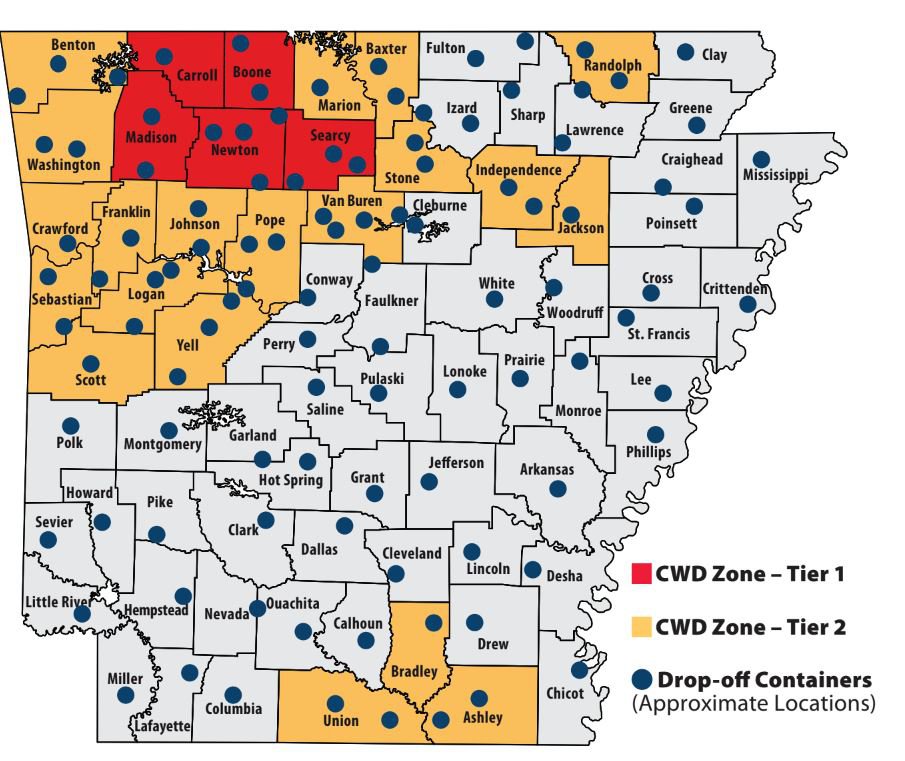
Last year the AGFC collected a record 8,804 samples from cervids in Arkansas (8,759 white-tailed deer, 33 elk and 12 exotic cervids). The vast majority of those samples came voluntarily from hunters. Last year’s test results reported 217 positive cases of CWD (208 white-tailed deer and nine elk).
Learn more about CWD at www.agfc.com/cwd.
CUTLINES:
Road Sign
CWD testing locations are available throughout Arkansas. AGFC image.
Freezer
Hunters can use special collection freezers around the state to test their deer for CWD for free. AGFC image.
Processing Samples
CWD test results are available in two to three weeks. AGFC image.
Map
A list of testing locations is available at agfc.com/cwd.
Recent News
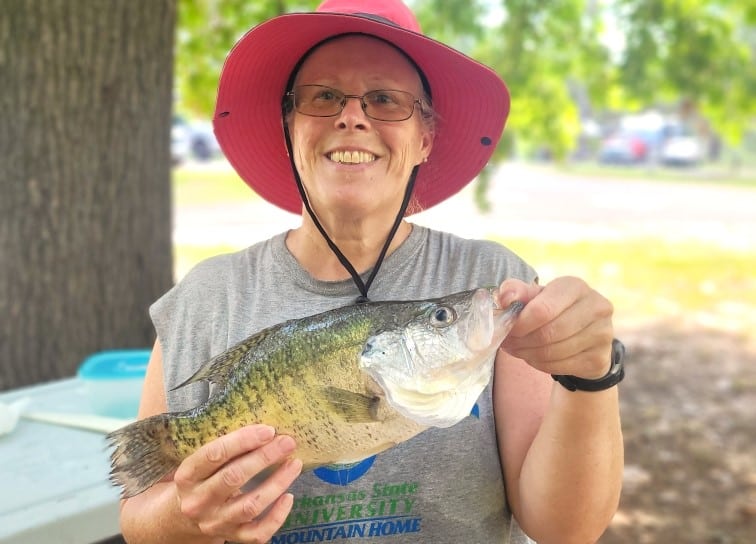
Arkansas Wildlife Weekly Fishing Report
Jul. 25, 2024
Subscribe to Our Weekly Newsletter E-mails
Don’t miss another issue. Sign up now to receive the AGFC Wildlife Weekly Newsletter in your mailbox every Wednesday afternoon (Waterfowl Reports are published weekly during waterfowl season and periodically outside the season). Fishing Reports arrive on Thursdays. Fill in the following fields and hit submit. Thanks, and welcome!

